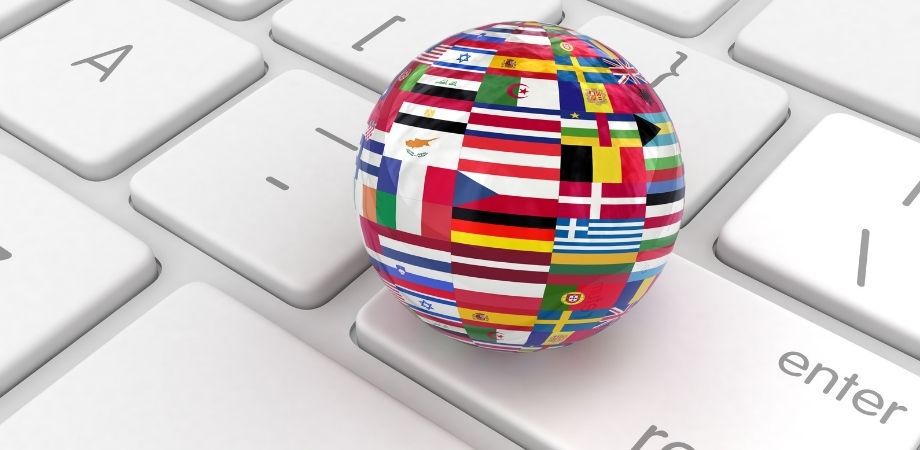Until recently, employment and sales activities for businesses were primarily localized within specific boundaries. With the advent of telephones and later emails, businesses expanded their reach. Nowadays, thanks to the internet, businesses of all sizes operate globally, transcending geographical limitations. As employees are dispersed across different regions, markets have become global in nature. Therefore, businesses must confront global communication challenges. In this context, the importance of translation services has greatly increased for companies aiming to operate on a global scale.
When expanding into different countries’ markets or hiring employees from foreign countries, it is crucial to be prepared to overcome communication challenges, especially global communication challenges. If your business operates globally, communication should be clear and seamless among all employees, as if they were in the same office. Establishing trust among your employees, enhancing productivity, and fostering a productive environment are essential steps. Also, this approach provides an occasion to address implicit issues from the onset, often facilitated by professional localization services.
In conclusion, effective communication is vital for a smoothly operating organization. In the globalized world, it is also crucial to pay attention to different communication styles influenced by diverse cultures. Cultural diversity poses one of the significant challenges to consider in business communication. We have compiled some tips to address the most common global communication challenges in the workplace.
Table of Contents
ToggleWhat are Global Communication Challenges?
In a decreasingly connected global world, especially when conducting business in transnational requests, it’s pivotal to take into consideration the communication characteristics of different societies and global communication challenges. You need to adapt your approach to verbal and written communication by considering the various approaches, perceptions, and styles of different cultures. Understanding these differences and being able to adapt to communication styles, traditions, and even expectations is important in establishing relationships.
Communication style is a collectively learned and shared behavior among individuals of the same nationality, ethnicity, religious beliefs, and so on. Communication styles play a significant role in how individuals perceive the world, interpret life, and shape their professional lives. The cultural diversity encountered in today’s world is a challenge that requires careful attention when communicating in the global arena. When conducting communication conditioning related to your business, it’s important to consider the ensuing rudiments, including localization testing to ensure that your communication resonates effectively across different cultural contexts.

1. Language and Dialects
Language barriers and cultural differences can lead to significant global communication challenges between a business and its international customers and employees. Improper speech, misinterpretation of words and gestures, or the use of specific accents, dialects, or even varying languages can negatively impact team cohesion, resulting in animosity and conflicts. The distinction between dialect vs. language can also play a role in these challenges, as what may be considered a dialect in one region might be viewed as a separate language in another. Because of these factors, it is important to foster comprehensive communication to promote cross-cultural communication within a multinational business.
2. Religious Beliefs
Fear or apprehension of the unknown plays a significant role in inadvertently creating communication barriers. Inside global communication challenges, this can be applied to religious beliefs as well. Sometimes, individuals may avoid communicating with people from different religious backgrounds due to assumptions about their beliefs. One of the main communication walls stemming from religion is the lack of knowledge or information about other persuasions and belief systems.
3. Stereotypes and Prejudices
One of the common global communication challenges is stereotyping. Stereotyping can be defined as the procedure of creating an overall picture of a culture. In this process, there is a tendency to generalize all people belonging to that culture as having similar characteristics and categorize them accordingly. Stereotyping can be grounded on factors similar to nation, gender, race, religion, race, and age.
It is worth noting that the media sometimes serves as a mass communication tool that promotes stereotypes and prejudices, thus creating more communication barriers.
4. Signs and Symbols
One of the global communication challenges is signs and symbols. Just like language, non-verbal communication is also fraught with many differences, making it a risky area of communication between individuals from different cultures. Gestures, facial expressions, and body language can differ greatly from one country to another. A hand gesture that signifies “thumbs up” and means “good” in one culture may carry a rude and disrespectful meaning in another culture.
5. Time Orientation
One of the common global communication challenges is time orientation. Each culture may have its unique perspective on time. While some cultures see time as a fluid entity beyond their control, others view it as an essential element that needs to be managed. These different attitudes towards time can create communication problems in businesses where individuals from diverse cultures work together.
6. Ethnocentrism
One of the common global communication global challenges is ethnocentrism. People tend to view individualities from their own culture as an in-group, near to themselves, while considering people from other societies as an out-group. In the workplace, it is common for preferences, sharing, and even conversations to favor the in-group. Ethnocentrism, which divides societies into” us” and” them,” hinders and indeed obstructs communication between different artistic groups.
Articles That May Interest You
Communications for International Business
Effective communication is a critical factor that influences the success of a business, anyhow of its size. When a business begins operating on a global scale, its workplace communication should also evolve and improve accordingly. Failure to do so can result in undesirable outcomes such as damage to corporate culture, missed targets in marketing messages, and breakdown of trust and team spirit due to inadequate internal communication.
A global business faces numerous global communication challenges related to both language and culture. These global communication challenges can be more diverse and intricate than anticipated. Overcoming such challenges requires different approaches and participation at all levels within the organization. Here are the most common global communication challenges encountered:
1. Language
For a company operating in the international market, the use of different languages can create communication barriers between both customers and employees. To overcome this barrier, utilizing translation services can be a solution. Still, it’s important to note that it requires scrupulous work that takes into account not only word-for-word restatement but also different artistic details.
2. Diversity
If an employer or an organization clings to their own culture as the norm and expects others to conform to it, it will undoubtedly lead to communication difficulties. Embracing and incorporating all cultures and diversities in communication not only enriches the communication process but also strengthens the organization.
3. Tone
Different countries and cultures have varying etiquette, customs of introduction, and forms of address. For illustration, in Japanese culture, communication is shaped by the relative status of the person being spoken to, meanwhile, in the United States, it’s much more flexible and relaxed. Therefore, being aware of these nuances specific to the country and culture one is in is crucial for effective communication.
4. Emotion
The appropriate level of displaying emotional reactions in business relationships varies greatly from country to country. For example, passionate communication with expressive gestures may be considered a normal part of business life in the Middle East and Latin America. However, in countries like Northern Europe and Japan, openly expressing such emotions would be seen as a complete failure in communication.
What is acceptable as an enthusiastic and passionate level of communication in one culture can be highly uncomfortable in another. Thus, it’s important to acclimate your emotional responses grounded on the artistic background of the individualities you’re communicating with.
5. Variations
In global business communication, different versions of the same language can create communication difficulties. Indeed, if you’re fluent in a language that’s understood by the individualities you’re communicating with, it may not be the original language or shoptalk. For example, using standard Spanish to communicate in Argentina may not be the most appropriate approach. While you may be understood, it can create a sense of unfamiliarity with the local culture.
6. Structure
How you say something is as important as what you say. In fact, in some cultures, even the pauses between words or the gaps between consecutive sentences carry meaning.
For example, in certain cultures, long pauses during conversations indicate that the listener is thinking about what was said and is considered a polite gesture. On the other hand, in another culture, such long pauses between sentences may be perceived as awkward. Communication between cultures relies on these delicate balances and is highly susceptible to misunderstandings.
7. Means
The increasing use of technology in communication also poses global communication challenges. For illustration, in some countries, phone calls or face-to-face meetings are preferred over emails in business connections. Such communication methods are considered more formal in those cultures. It is evident that attempting to establish a long-lasting business relationship through email in such a culture may not be successful.
8. Principles
Each culture has its own set of values, and the comprehensions of these values frequently vary greatly between societies. Furthermore, individuals tend to find the values of their own culture logical and reasonable. Therefore, in business communication, it is crucial to avoid pitfalls and mistakes such as considering any cultural value as illogical, unacceptable, foolish, wrong, or absurd.







